“Fondos” they call them, in Italy; in France it’s “Sportifs” and in Spain it’s “Marchas”. The cycling press is full of them, VeloVeritas decided to take a look at these increasingly fashionable “mass participation events.” Who better to ask then, than Paul Coates?
As well as hurting everyones’ legs in the first half of the Scottish road season, Paul is one of the top protagonists in French Sportifs. We also speak to Adam Syme and Dave Chapman about their experiences in these events too.
Paul Coates
What are a Sportif and a Fondo, Paul?
“They are races, in all but name. There’s prize money and intense competition at the front, but they also give the “ordinary” rider the opportunity to sample some of the sport’s legendary roads. For example, the “Marmotte” event in France goes over the Croix de Fer and finishes atop Alpe d’Huez. A Fondo and a Sportif are the same thing.”
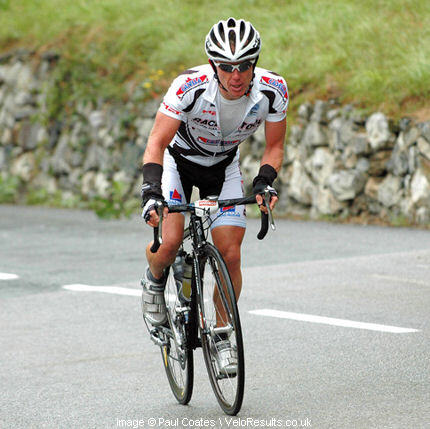
What’s the difference between Fondos / Sportifs / Marchas as opposed to Randoneé and Audax events?
“In the latter, it’s not about time, in fact, if you finish too soon, then you can be disqualified, basically they are touring events. Like I said, Sportifs are really races.”
What are your favourite events?
“I ride the French events predominantly; it’s very hard to get a result in Italy because it’s almost impossible to get into the front groups. I’ve ridden half-a-dozen in Italy, but you don’t get recognition for your performances outside the country.
“In France, because I’ve had some decent results, I get seeded into the front group. It’s like rallying, if you are away early, you are looking at clear roads; you don’t have a couple of thousand riders in front of you.
“The competitors go-off in ‘waves’ and if you’re not in the front waves then you can’t be competitive, because you have to battle your way through huge numbers of riders.”
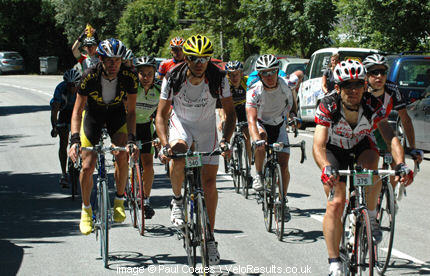
There are big fields, then?
“The Marmotte, which I mentioned earlier, has 4,500 starters! As your results get better in France, you move up the groups.”
So, at the front-end, it’s a race?
“Absolutely, there’s no difference, that includes team tactics and full-time riders. Raimondas Rumsas makes a good living from them, and I’ve even seen Frank Vandenbroucke ride one. In Italy, Liquigas and LPR have Fondo, as well as pro teams.
“The Rabobank development squad competes too; a few years ago, when Thomas Dekker was on the way up, he used to ride them. Talking of the Netherlands, it’s big there, with well-organised teams lining-up.”
But why not just ride races?
“I love the atmosphere, with the big field; and where else would you get that kind of buzz, great weather and the chance to compete on some of the sport’s most famous roads?”
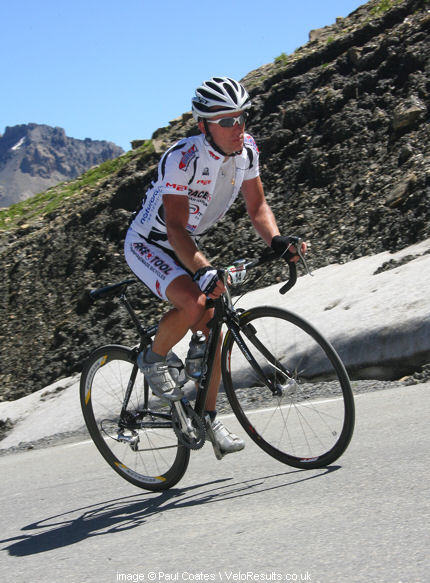
What about entry fees and prizes?
“Entry fees are around 25 euros; and as an example the overall first prize for winning the 12-race French series was 10,000 euros plus a set of the latest Mavic carbon wheels. But the “goody bag” that you get when you sign-on is worth the cost of your entry.”
You ride for an Italian team…
“Yes, Squadra Via Mazzini/Racetool, I got invited to join. I met guys from the team at various events, got chatting to them, one thing lead to another and I was invited on board.
“The main support I get from them is that they provide all my training and race clothing, they’ve been very generous with that aspect. They provided me with an Italian licence too, but I can’t use it in the UK.”
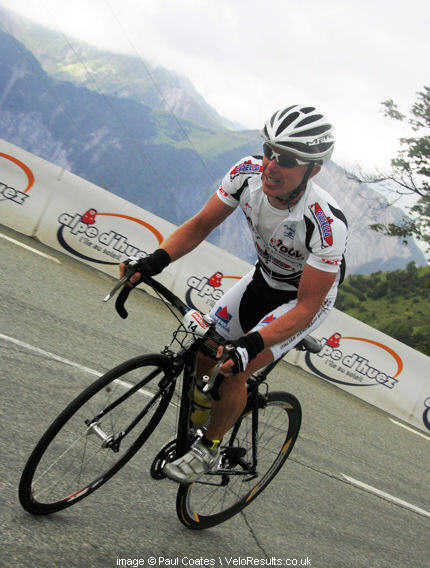
What’s your best performance in a Sportif?
“This year I was third overall in the Trophee d’Oisans Series, that’s over four events held in the Alps.
“I was also seventh out of several hundred riders in a time trial up Alpe d’Huez, the day after the Marmotte, where I recorded 46.09.” [That’s faster than Bernard Hinault and Greg Lemond climbed the mountain in 1986! Ed.]
Where does Scottish racing fit-in with your programme?
“I still like racing in Scotland, especially in the races which have a history to them, like Girvan and The Drummond. It’s hard racing in Scotland, there are no big bunches to “hide” in.”
What’s the plan for 2008?
“I have a change of team in the offing, which is very exciting. I’ve been training since the first of October and want to be screaming-fit for March; there’s the Bikeline two day, Tour of the Reservoirs and Rosneath, all leading-up to Girvan. To get a stage win at Girvan would be a dream come true.
“I also have a full programme of Sportifs planned, including a three day event in the Vosges; I’m really looking forward to next season.”
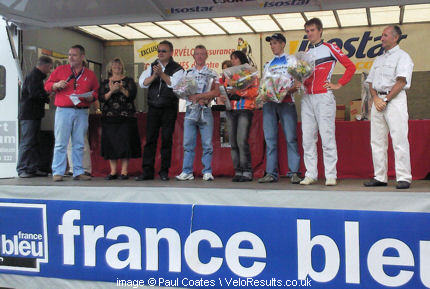
I had to rest after speaking to the man; I was worn-out just listening to his plans! Not everyone is as commited as Paul, but there’s room for all levels of ability in these events.
At the Fondo which is held the day after the Tour of Lombardy, VeloVeritas discovered there was a ‘Scottish interest’ – City Couriers owner, Adam Syme from Edinburgh, was tackling the 113 kilometre event, which shares many kilometres of tarmac with the finale of the previous day’s Classic of the Falling Leaves – including the fearsome Ghisallo climb.
Adam Syme
How did you finish, Adam?
“I was 388th out of 2000 starters, that’s an improvement on last year. This is my second Fondo, but I would like to ride a couple more next year, particularly the Milan-San Remo one. There are three organised by the Gazzetta dello Sport, the Primavera one, there’s one during the Giro and Lombardy weekend.”
Why Fondos and not races?
“They are races, really; all the Italians treat them as such. For the series of three events I mentioned above, the team prize was a Skoda Roomster car – that illustrates that these are serious events.
“I like them because they are great occasions and wonderful things to experience with the closed roads and slick organisation. In addition, I love Italy, I raced for a season there as a junior, and have a great affection for the place.”
The fields are big aren’t they?
“Lombardy had 2000 starters, but the Etape in France has 8,000. Despite the size of the bunch, you can end up in a small group or even on your own.”
We believe the “goody bags” you get, when you sign-on are cool?
“At Lombardy, we got energy bars, arm warmers, track mitts, vitamin pills and other stuff; it all adds up to more than the €12 or €16 it costs to enter.”
And next year?
“I’d definitely like to ride the Milan-San Remo one, but I’ll need to make sure I’m in good shape for that!”
For our final insight, we asked someone close to home, ‘our man in Markinch’, Dave Chapman.
Dave Chapman
You rode the Campagnolo Fondo in 2000, didn’t you, Dave?
“Yes, 200 kilometres and four Giro-standard climbs.”
What possessed you to sign-up for that?
“I work away from home a lot, but the winter before the Fondo, I was at home and I rode my bike through the autumn, over Xmas and into the spring. Stewart Sutherland had ridden the Fondo in 1999 and had really enjoyed the experience.
“I didn’t do any quality training, just riding my bike, but I did ride some vets road races and I started to think that I quite fancied the idea of riding in Italy.”
How many starters were there?
“All told, about 3000 lined-up at the start. How it works, is that everyone sets off together and as the ride progresses, at set points, you can choose one of three routes: the ‘normal’ route which had two climbs; the ‘medium’, with three climbs; and the ‘Grand’ which had four ascents, which were all ‘man’s climbs!'”
What was the organisation like?
“It was excellent, very well marshalled, motor bike service – the lot. When you signed on the day before, you received an excellent “goody bag” – energy bars, feeding bottles, a Campagnolo racing jersey, a bottle of wine, gels and other bits and pieces.”
Wasn’t it dangerous?
“I didn’t actually see any crashes, but the first 14 kilometres were mayhem with riders wall to wall and the whole field going like mad to be at the front for the first climb; it was the big ring from the off.
“The first 14 K were on a wide, flat, fast road, but then, in a little village it turned onto the climb; there were guys taking to the fields cyclo-cross style to try and get around the jam of riders at the foot of the climb – it was wild.
“The top-level and celebrity riders – Robert Millar was riding! – are kept clear of all that though, they go off right at the front. After the first big climb, it all settles down a bit, from the top, the biggest group I was in, was 25 or 30.”
What were the climbs like?
“Brutal! They were all climbs that feature in the Giro, I was climbing the Manghein for two hours and twenty minutes, it’s a 2000 metre climb, over 37 kilometres and very tough.
“I compromised my ride a bit by riding the 90 kilometres of the ‘normal’ Fondo on the day before the Grand Fondo; some of the Falkirk guys who were there were doing it, so I decided to go with them – it seemed like a good idea at the time!
“But with the benefit of hindsight, 90 kilometres maybe wasn’t the best idea 24 hours before doing 200 kilometres over three Giro climbs!”
Would you ride another one?
“Yes, it’s a great experience, especially since most of the competeitors there are just boys like us who enjoy the ‘crack’ and love riding their bikes.”
Well, there you have it. Get on the net, send the entries away, and book those flights – just don’t look for me in the bunch; Giro climbs?… where’s that glass of red wine?



